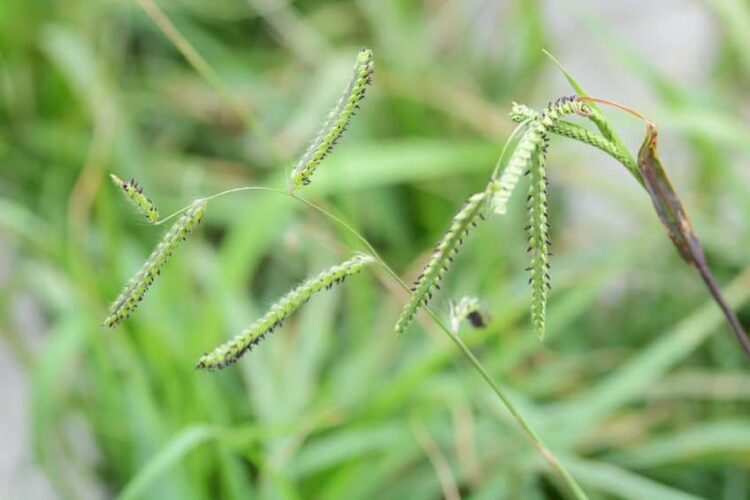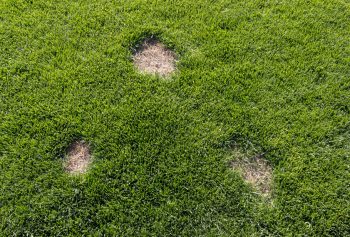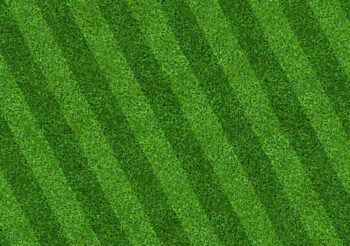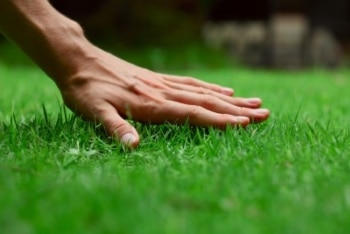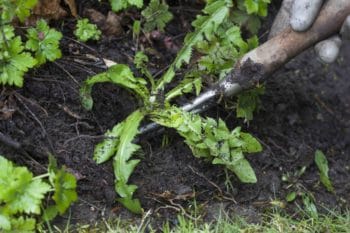 The first defense against weeds is to promote vigorous lawn growth. When the grass density is high, weeds have a hard time finding space to grow, which is why they always thrive best in sparse areas.
The first defense against weeds is to promote vigorous lawn growth. When the grass density is high, weeds have a hard time finding space to grow, which is why they always thrive best in sparse areas.
Proper fertilization, watering, and mowing are very important for vigorous lawn growth. In addition, frequent cutting is complemented by hand-pulling the young weeds before their root development complicates this task.
A comprehensive weed control program also includes herbicides. They are fundamental agrochemicals that must be applied at specific times of the year, and selected appropriately so as not to damage the grass that we intend to maintain.
What do we mean by weeds?
Weeds are unwanted plants that grow in the wrong place and ruin the aesthetics of your garden. Weeds compete with grass and other plants for the use of space, light, nutrients, and water.
Some weeds act as secondary hosts to different insect pests, pathogens, and nematodes such as aphids, root nematodes, root rot fungi, phytoplasmas, and other unwelcome bugs. The presence of weeds can also affect the efficiency of work in the garden. For example, allergies (ragweed) or skin irritation from direct contact can make the most avid gardener shy away.
Types of Herbicides
According to the way the herbicide acts, we can classify them into:
- SYSTEMIC: They penetrate the plant through the leaves and roots, and travel throughout the body of the plant.
- CONTACT: They destroy the parts that come in direct contact with the herbicide and the plant dies when it is not able to feed itself or to carry out photosynthesis.
According to the moment of action:
- PRE-EMERGING: They are applied before weeds appear. They are a preventive control and generally their action lasts throughout the season. They should not be used on recently implanted lawns but on those already established, knowing the recurrence of weeds in the place.
- POST-EMERGING: They are applied when the weeds have already sprouted. They are generally systemic and do not require soaking the plant, just spraying it.
Our friends at Texas Agrilife Extension have additional helpful information on both pre- and post-emergent herbicides, and which plants they work best on.
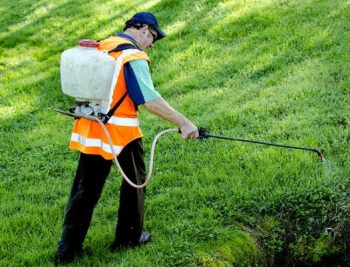
Common Post-Emergent Herbicides:
- 2,4-D : has a large spectrum of action in broadleaf weeds. It does not control grasses. It can be used with most grass weed species, even in its first year of implantation. Fumigation of neighboring ornamental plants should be avoided.
- 2,4-D + Dicamba : increases the spectrum and affects white clover.
- Quinclorac: very effective in bermudagrass, to control broadleaf weeds, grasses, clover and kikuyo. Do not apply to other grass species without consulting.
Never apply post-emergent herbicides in stressful situations – such as high temperatures or drought – because the grass will be damaged and the effect will be poor. On mature lawns there is nothing better than applying the correct pre-emergence in early fall and in spring. Then, post-emergent treatments can be done in the last month of these seasons, according to the species detected.
Ryno Lawn Care offers weed control services in several D/FW metroplex cities.
We can remove them by pulling them off by hand or with chemical products.
Manual removal: Plucking them by hand or with a hoe. It is a good option when the natural grass plot is small, at most 100m², and it is not heavily populated with weeds.
You will have to take care that they come out by the roots. Some will not emerge again once removed. But with other species it will be necessary to monitor and continue to remove them until they weaken and stop sprouting.
Herbicide elimination: When it comes to Dicotyledons (broad-leaved herbs like clover) it is easier to kill them. The problem is with Monocotyledons, since they are from the same family as natural grass and a not very selective use of the herbicide could damage it as well.
Check out our Lawn Weed Identification Guide to learn which treatments will be most effective for your yard, based on what you’re up against.
Weed Screening in Winter
Weeds are found in all gardens/lawns, but there is great variation between the species growing in each and the population densities they harbor. In the same way that screening for insects and diseases is part of any integrated pest management approach, so screening for weeds is the primary element of any integrated weed control.
- Identify weeds at the start of the winter season, when their presence can adversely affect the plants and grass.
- Determine the herbicides to use based on the weeds to be eliminated.
- Identify areas where spot treatment is required.
- Choose the best time to intervene, depending on the weed type.
- Choose a product registered for the weeds to be controlled.
- The use of herbicides should always be combined with the application of appropriate preventive measures.
- It is important to remove dead leaves from the surface of the substrate or soil to ensure that the herbicide infiltrates the soil surface.
- Avoid repeated use of the same herbicide year after year, to reduce the risk of development of resistant weeds not destroyed by the product.
- Before using a product, read the label carefully and follow all the manufacturer’s instructions.
- Always check the tolerance of your grass and other plants for the recommended products.
- Make sure that the chosen herbicide is effective for the target weeds.
- Before you use your sprayers, make sure they’re calibrated correctly, and the nozzles are not clogged.
- Lawn thatch layers can act as a natural barrier against invasion. Aerate the lawn to remove the thatch layer, allowing lawn treatments to reach their target regions.
- Use the doses recommended by the manufacturer.
- Do not use herbicides in full sun or wind, it can reach neighboring places and end up with plants that we do not want to destroy.

